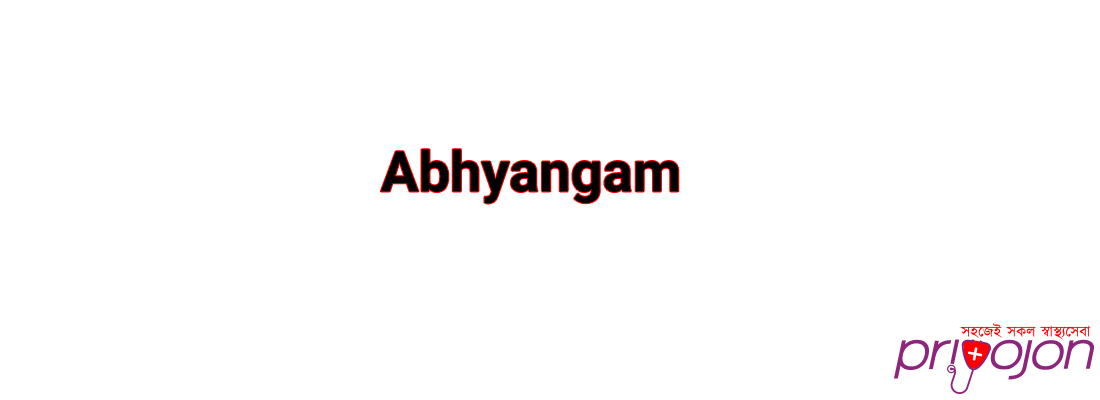
Overview
Medically reviewed by Dr. Rabeya Afroz Shomi
What is the Abhyangam?
Abhyangam is an Ayurvedic massage therapy or treatment that is performed to soothe your body, mind, immune system and skin. The treatment involves ample amount of oil and a distinctive one or two therapist sequence which softens and relaxes the tissues. During the massage therapy, your body is massaged in the direction in which your blood from your artery flows, basically in the direction of the body hair. The scientific reason behind following this protocol is to increase the flow of blood to the most distal body parts and to avoid increasing pressure on the heart through venous return in case the massage is done in the opposite direction.
Abhyangam is performed using herbal powder, oil and ghee or herbal pastes. It is considered part of a daily routine as per Ayurveda, and is used to relieve pain, exhaustion and stiffness. Unlike any other moder day massage, this therapeutic procedure uses different kinds of oil to treat various Vata disorders. Depending on the methods developed and used, or the body parts involved Abhyangam can be categorized into different types- a foot massage or pad abhyangam, head massage or shiro abhyangam, and full body or Sarvanga abhyangam.
How is the Abhyangam done?
Sarvanga abhyangam or a full body massage ideally start from the head and end at your feet. The body is massaged in portions and not at a stretch. This method is followed in order to ease the flow of blood and lymph and relax your body, starting from the head towards the toe. Varying pressure is induced in certain portions of the body while massaging. For instance, light pressure will be induced to your forehead and face, abdomen, neck, eyes, and chest area, while firm pressure will be applied on your waist, back of the neck, and sides of the body using long strokes.
The joints and the abdomen should be massaged in a clockwise circular motion in the direction of your large intestine- moving up on the right side, straight across your abdomen, moving down on the left side. The massage should be done for 5-15 minutes, after which you will need to rest for 15 minutes before taking a bath in warm water. The massage therapy should take place in a ventilated, draft-free, comfortably warm room such as a bathroom. During summer normal oil is used while in the winter season, warm or lukewarm oil is used for the massage. The kind of oil to be used depends on the dosha or area to be massaged. For example, cooling herbs soaked in sesame or coconut oil is used to massage the head portion. Sunflower oil, sesame oil or olive oil is used for a body massage, and ghee or any suitable oil for the dosha can be used to massage the feet.
Who is eligible for the Abhyangam?
Anybody and everybody can have an Ayurvedic therapy done. Precisely, if you have symptoms of arthritic disorders, circulatory disorders, injury and backaches, anxiety, fatigue, or skin problems, then you are eligible for an abhyangam or ayurvedic massage therapy.
Who is not eligible for the Abhyangam?
Abhyangam or ayurvedic treatment should not be performed under the following conditions- indigestion or dehydration, fever, blood clots, during menstruation, during pregnancy, during chemotherapy. If you are going through any of the aforementioned conditions, then you won’t be eligible for the treatment.
What are the side effects of Abhyangam?
There are no known side effects of Abhyangam or Ayurvedic therapy as they ar extremely safe.
What are the post-treatment guidelines?
There are no such guidelines that need to be followed after a Ayurvedic treatment. However, you may have to go for a herbal bath before you take a normal bath, in order to remove the oil extracts from your body. You may be asked to make certain lifestyle changes or maintain a healthy diet so that the effect of the treatment lasts longer.
How long does it take to recover?
Recovery after Abhyangam treatment does not take time because it is an Ayurvedic therapy. You can get back to your usual activities as soon as the treatment session ends.
Are the results of the treatment permanent?
Abhyangam treatment does not yield permanent results. You will need to follow frequent therapy sessions at least once in every 2-3 months in order to experience long lasting results.
What are the alternatives to the treatment?
There are no alternatives to an Ayurvedic abhyangam treatment.
Key Highlights
Safety: Very High
Effectiveness: High
Timeliness: Very High
Relative risk: Very Low
Side Effects: Very Low
Time for Recovery: Very High
Price Range: Tk.1000- Tk.2000
